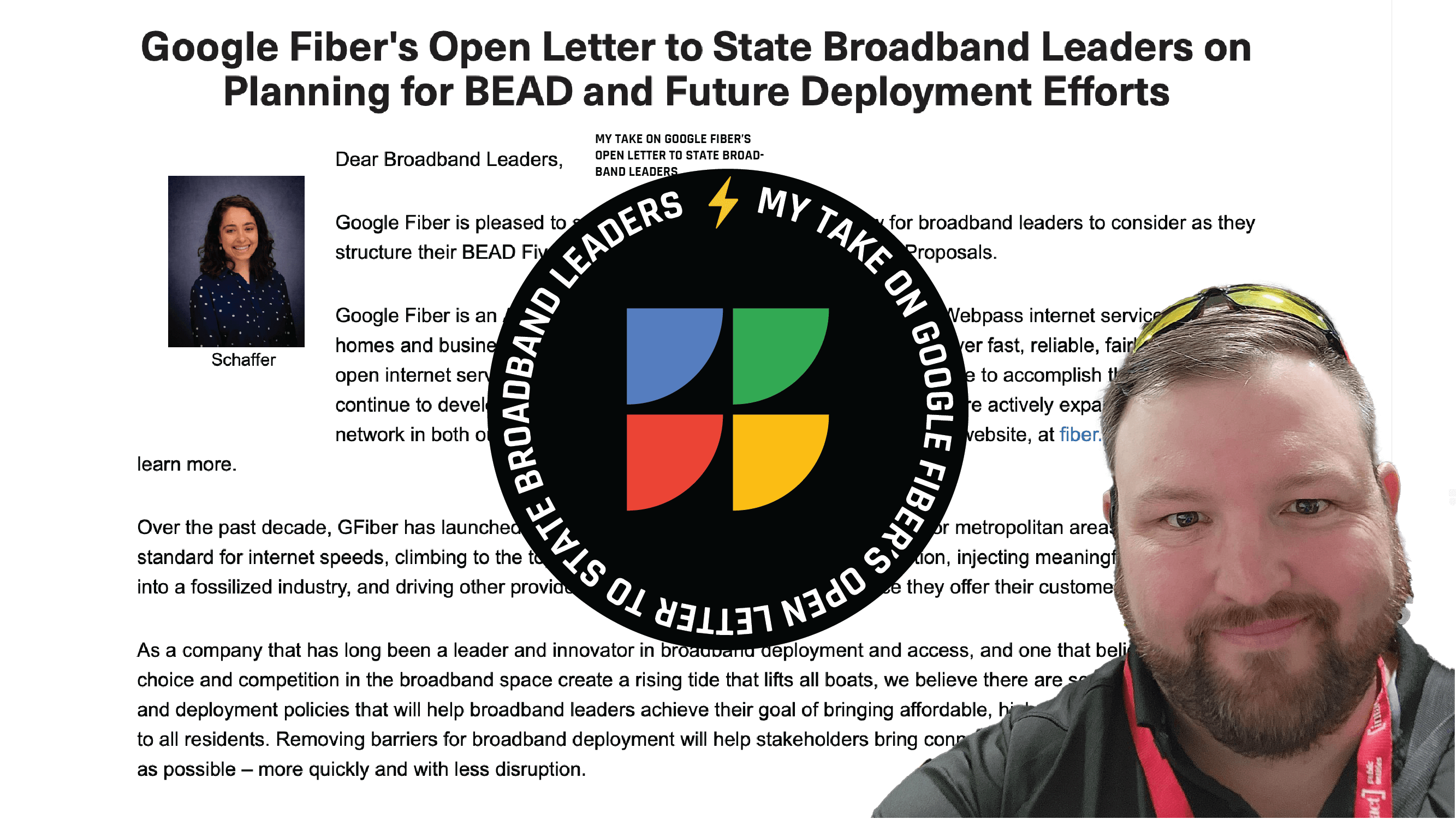
GFiber (aka Google Fiber) recently wrote an open letter to State Broadband Leaders on “on Planning for BEAD and Future Deployment Efforts”. This garnered a lot of attention and was in my estimation a good faith effort to open the discussion of reform within their industry. Since they mentioned damage prevention and 811 a lot, allow me to continue the discussion…
[If you haven’t read the letter yet, do so now 🔗]
Commentary
I’m going to stay in my lane here & just focus on the damage prevention part of the letter.
“The current locates system is not designed to handle the vast amount of new project work anticipated in the next few years.”
Totally agreed! Just look at the 2022 DIRT Report.
“In an effort to avoid delays, and before the commencement of construction, the State Broadband Office should share with the State’s 811 center the locations where publicly funded projects are going to be built.”
Also agree, our CEO Shane Hart just shared about the progress 811 Chicago has made in reducing damages through a proactive approach!
“Consider including a one-page summary written by the State 811 advising the winning recipients of the basic steps to ensure safe digging across the state.”
Haha we do this right now with Utilocate. In every locate package we insert the state dig laws so the excavator knows what they can and can’t do legally.
“Consider a joint effort to modernize 811’s technology.”
Implementing these suggestions is easier said than done. While we have a wealth of tools at our disposal, they often remain underutilized. To achieve real-time data access, we need robust APIs that connect with 811 centers, allowing seamless data sharing and mapping. Additionally, the concept of reporting chronic damagers is promising and achievable, as it could improve industry performance and competition.
“Create an online one-stop shop for submitting permits.”
Streamlining the permitting process is a significant challenge, but GFiber's support for creating standardized resources and encouraging local governments to simplify the permitting process is a positive step. I think this could take a lot longer than GFiber realizes but if we take 811 Chicago as an example of having permitting streamlined and in the damage prevention process then I think it’s a laudable goal and worthwhile.
My Recommendations
Prioritize the End User - Excavators:
The individuals responsible for excavation are often at the front lines of infrastructure development and maintenance. Their work is physically demanding and can be hazardous. Therefore, it's crucial to prioritize their needs. One way to do this is by embracing advancements in excavation technology. The reference to "robotic roadworks" technology from ULC Technologies is an excellent example. These innovations can greatly enhance the safety and efficiency of excavation processes. For instance, robotic systems can perform digging and utility location tasks with high precision, reducing the potential for damage to existing infrastructure. This not only enhances safety but also increases the speed and accuracy of excavation work. Additionally, introducing technologies like the AMI Rod Radar bucket can further empower excavators to work with greater control and precision.
By supporting these technological advancements, we not only make the job of excavators easier and safer, but we also reduce the risk of accidental utility damage. This is a win-win situation where the end users benefit, and the broader goal of infrastructure protection is better achieved.
Digitize Locates for Excavators:
The move towards digitizing locate information is a fundamental step in modernizing the damage prevention process. It acknowledges the obsolescence of paper-based systems and addresses the need for real-time access to crucial data. Excavators, as well as other stakeholders involved in the process, should have the information they need at their fingertips. This is especially important for fieldwork where time is of the essence.
Establishing a standardized digital system for locate information ensures that everyone involved has access to clear, concise, and up-to-date data. This means that an excavator, before even starting work, can access all the necessary information digitally. This transformation in information access is invaluable in preventing damage to utility lines. When workers have immediate access to accurate data, the likelihood of accidents and damages decreases significantly.
Leverage Geospatial Technology:
Geospatial technology, particularly Geographic Information Systems (GIS), is a game-changer for damage prevention. By mapping and managing underground utility infrastructure using GIS, we can achieve a level of accuracy and efficiency that was previously unattainable. When excavation teams have access to precise, location-based data, they can plan their work with greater accuracy, ensuring that they avoid utility lines and other potential hazards.
GIS technology also helps to streamline the process of locating utilities. GIS can be expensive though and so we need to find a way to provide it at reduced costs. This would allow excavators to make informed decisions about where to dig and how to proceed, all while avoiding potential damage.
Enhance Collaboration with Telecommunications Providers:
In the modern world, broadband infrastructure deployment often involves a complex web of both public and private entities. I understand the reluctance to do this because of competitive advantage but maybe adoption of blockchain technology like Shane Hart suggested in his latest article could help, because then it more secure and monetizable. Collaborating closely with telecommunications providers is essential to ensuring that all parties are on the same page. By encouraging these providers to share crucial data, we create a more coordinated and efficient approach to broadband deployment.
This collaboration is particularly important in situations where multiple service providers are working within the same geographic area. A unified approach ensures that utilities are accurately located, reducing the likelihood of accidents, damages, and delays. Strong partnerships with telecommunications providers can lead to a more reliable and efficient broadband infrastructure deployment process, which ultimately benefits the end users and the community as a whole.
Enforcement and Punishment for Repeat Offenders:
Strengthening enforcement measures and developing clear legal frameworks are critical for maintaining safety standards and expediting broadband deployment. It is essential to hold those who repeatedly violate safety guidelines accountable for their actions. By conducting thorough investigations and imposing penalties on chronic damagers, we create a strong deterrent against unsafe practices. It's one of the great things they've done at 811 Chicago.
This approach benefits both infrastructure protection and the broadband deployment process. It sends a clear message that safety and damage prevention are top priorities, while also reducing the occurrence of accidents and damage, which can cause significant delays and costs.
Conclusion
In conclusion, I firmly believe that by implementing the recommendations outlined above, we can significantly reduce barriers to broadband deployment and facilitate the expansion of affordable, high-quality internet access to all residents. The collaborative efforts of state broadband leaders, local governments, and broadband deployers are essential in bridging the digital divide and ensuring that connectivity reaches as many households as possible, as quickly as possible. If you read NUCA’s flyer on broadband deployment you’ll see the need for high speed fiber optics in the ground, now we need to accommodate the people trying to implement it!
Share this Post












